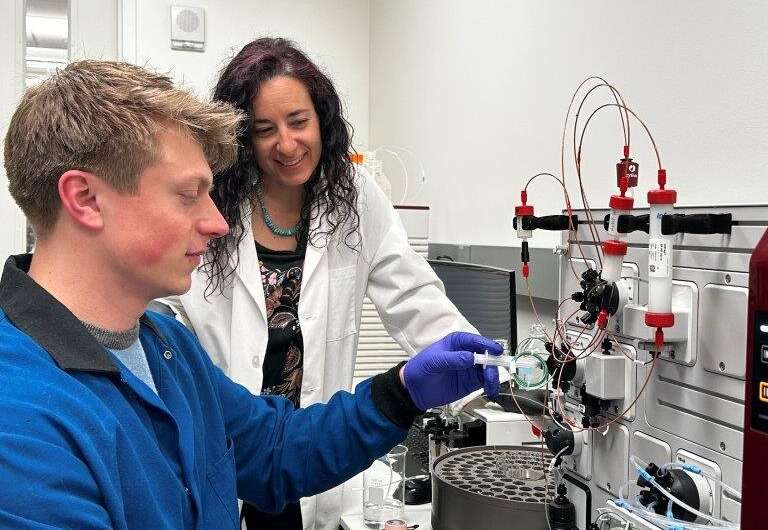Banks in Canada push for deposit insurance boost to cut risk
, Bloomberg News
A coalition of Canadian lenders is urging Prime Minister Justin Trudeau’s government to increase the limits on deposit insurance, arguing that it would send “a strong signal” about financial stability and reduce the risk of bank failures.
Canada’s insurance program protects depositors up to C$100,000 (US$73,200) per account, far less than the US$250,000 cap on most accounts covered by the U.S. Federal Deposit Insurance Corp. Executives of smaller financial institutions asked Finance Minister Chrystia Freeland to announce a review of the limit in her March 28 budget.
“Increased protection limits would send Canadians a strong signal about the stability of the financial system while greatly reducing any concern about the damage a ‘run on the bank’ could have on an institution and its depositors,” says a letter to Freeland signed by five executives, including Equitable Bank Chief Executive Officer Andrew Moor and Home Capital Group Inc. CEO Yousry Bissada. It was sent under the letterhead of the Banks & Trust Companies Association, which represents small and medium-sized financial institutions in Canada.
The group has been lobbying for deposit insurance reform since before the March 10 collapse of Silicon Valley Bank, which has put US regional banks under extreme pressure. Asked to comment on the letter, Freeland’s office stressed safeguards are already in place to protect deposits.
In Washington, officials are now looking at ways to temporarily expand FDIC coverage to all deposits — a measure that a group of mid-sized US banks argues is needed to shore up confidence. Treasury Department staff are reviewing whether federal regulators have enough emergency authority to lift the current limit, even if they don’t consider such a move necessary right now, people with knowledge of the matter told Bloomberg.
SVB’s failure, followed by the closing of Signature Bank just two days later, led regulators to take extraordinary measures to reassure depositors of both banks. But it hasn’t stopped fear from spreading to other regional banks such as San Francisco-based First Republic Bank, which tumbled 47 per cent on Monday as S&P Global cut its rating for the second time in a week.
Canada’s banking system, which is dominated by six domestic institutions with a large and diverse base of depositors, operates under a different regulatory structure than the U.S., and has proved to be relatively stable. The last financial institution failure handled by the Canada Deposit Insurance Corp. was in 1996 — though Home Capital suffered a run on deposits in 2017 that nearly took it down before it received a lifeline from Warren Buffett’s Berkshire Hathaway Inc.
Among other benefits, a higher deposit insurance limit would be useful to business owners who need a cash float of more than C$100,000 and help create more choice in the market, the Canadian financial executives said in their letter to the finance minister. “Competition in financial services is an important issue and increasing CDIC deposit protection limits would help achieve that,” they said.
In an interview, Moor said the Canadian financial system “looks really solid in this environment” and hasn’t seen the same problem of deposit flight that’s afflicting some U.S. regional banks. But adjusting the deposit limit to a level more comparable to the U.S. — such as C$200,000 to C$300,000 — would improve it, he said. CDIC insurance is funded by premiums paid by financial institutions.
The Trudeau government is “committed to a strong deposit insurance framework,” Freeland’s press secretary, Adrienne Vaupshas, said by email Tuesday. “There are stringent safeguards in place” through both CDIC and the main national financial regulator “to ensure the deposit insurance framework continues to meet the key objectives of protecting Canadians’ savings, securing the trust and confidence of depositors, and supporting the stability of Canada’s financial system.”
The Canadian Bankers Association, a trade group that includes the biggest banks, doesn’t currently have a position on the deposit insurance limit, according to a spokesperson.
Canada’s bank deposit insurance limits

The group, representing the country’s medium and small banks, wrote to Finance Minister Chrystia Freeland last month urging the Canada Deposit
Insurance Corporation (CDIC) to double its coverage to $200,000 per depositor.
Canada has the lowest level of deposit insurance among G7 countries, the letter dated Feb. 7 said.
“The CDIC is reviewing their depositor insurance regime to make sure that it is effective,” said Andrew Moor, chair of the group, in an interview. “They are always trying to make sure that things are relevant.”
CDIC did not immediately respond to a request for comment.
In an email, a spokesperson for Freeland said the government was committed to a “strong deposit insurance framework.”
About 65% of deposits at Canada’s top six banks — Royal Bank of Canada, TD Bank, Bank of Montreal, CIBC, Scotiabank and National Bank of Canada — are uninsured, according to DBRS Morningstar.
In addition, the U.S. subsidiaries of the top six have uninsured deposits ranging between 30% and 70%, DBRS estimates.
Around 25% of deposits are uninsured with the mid and small banks, DBRS said in a report released on Monday.
The recent collapse of regional U.S. lenders such as Silicon Valley Bank and Signature Bank has raised questions about the stability of financial institutions across the world.
Calls have grown for the U.S. Federal Deposit Insurance Corp to offer temporary guarantees for all uninsured U.S. bank deposits in the wake of collapse of several U.S. regional lenders.
Despite Canada’s lower deposit insurance cap, analysts have said the U.S. banking crisis is unlikely to spread to the northern neighbor where banks are better regulated and have ample liquidity. CDIC has some 85 members, while FDIC has more than 4,700 institutions.
“Increased protection limits would send Canadians a strong signal about the stability of the financial system while greatly reducing any concern about the damage a ‘run on the bank’ could have on an institution and its depositors,” the Bank and Trust Companies Association said in the letter.
(Reporting by Divya Rajagopal in Toronto and Steve Scherer in Ottawa; Editing by Richard Chang and Josie Kao)





/2023/03/21/image/jpeg/TpoZKDCTLJNRNMRmu3JRnbGxRFxLD543hkzk2sRQ.jpg)



